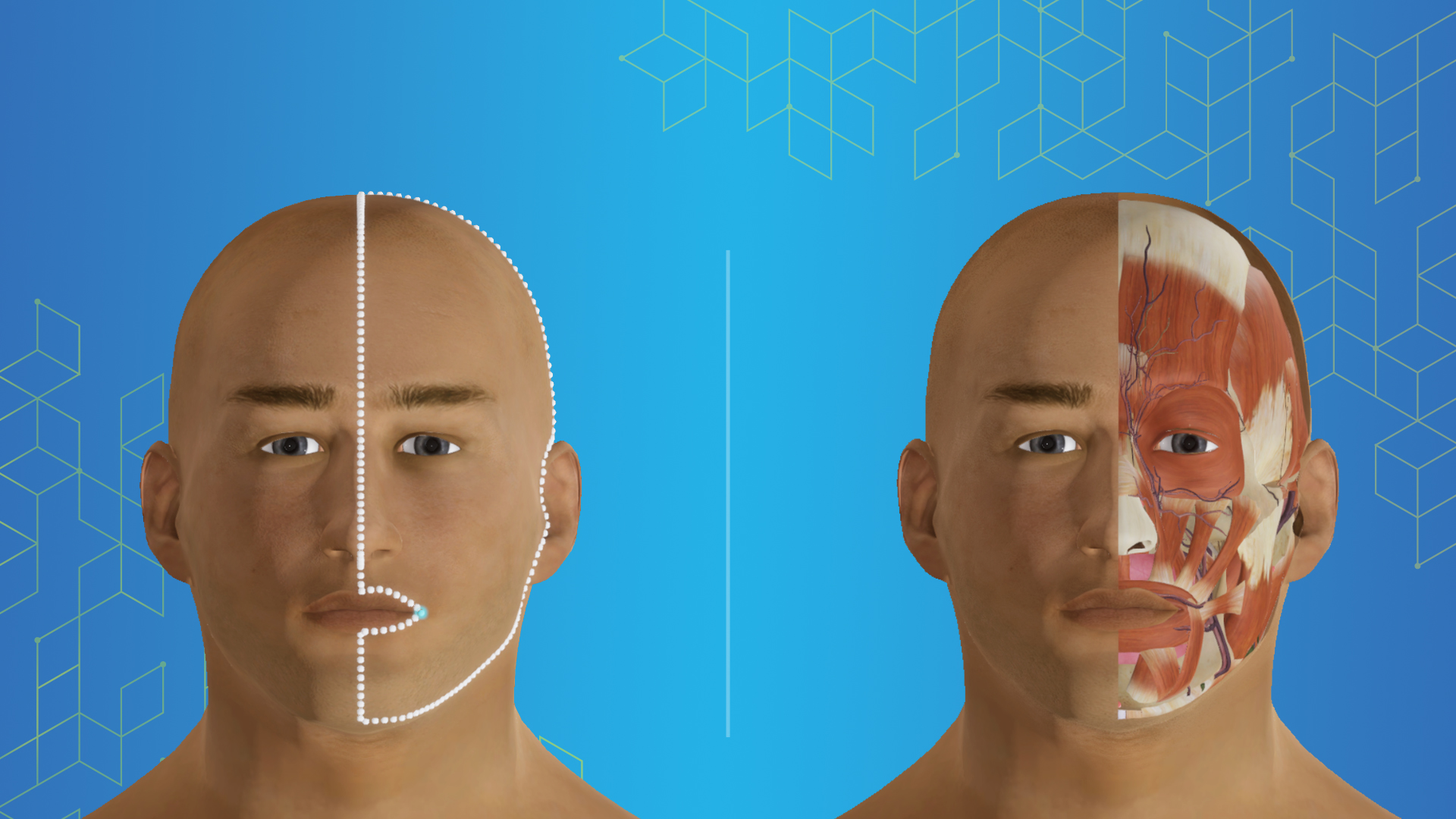Window dissection is the most popular form of cadaveric dissection which is essential for medical students to understand human anatomy. In this type of dissection, openings or “windows” in the cadaveric body are created to visualize specific structures or regions with their relations.
Traditionally, across most colleges in the world, window dissection is studied only through cadaver-based dissection techniques. However, in this traditional form of window dissection using cadavers, any wrong cut or removal of the part may damage the cadaveric body part under dissection which refrains other students from practical experience of understanding anatomy for the damaged region. Moreover, traditional cadaveric window dissection is limited as it allows individuals to dissect and observe anatomy in a particular plane and fixed order only.
Limitations of traditional cadaveric-based window dissection can be resolved using a virtual dissection table like Cadaviz, which contains a fully segmented real human 3D anatomy system and covers all topics of window dissections. Cadaviz is created in adherence to the Competency Based Medical Education (CBME) curriculum adopted by the National Medical Commission, India, which is followed by medical colleges across India. This interactive virtual dissection table is provided with precise instructions and interactive simulations using a stepwise approach which helps in learning complex anatomy in a simple and interactive manner which supplements the traditional way of learning anatomy.
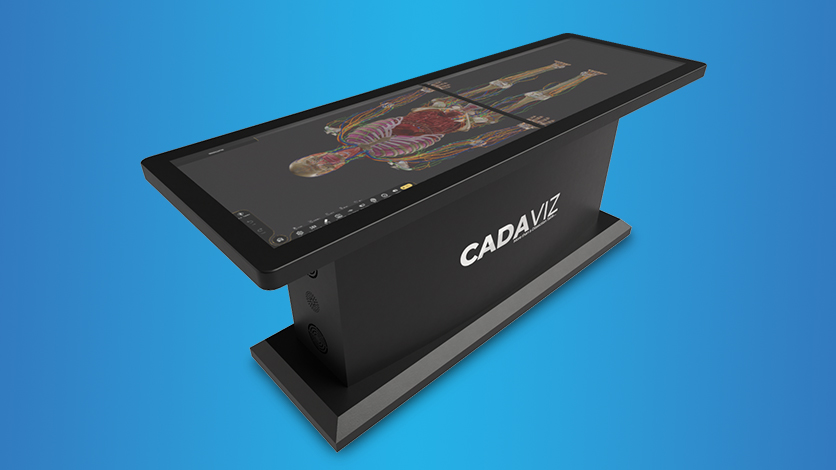
Let us explore window dissection, also known as block dissection, which is available on Cadaviz and has interactive features for exploring,
Instruments used in anatomy dissection:
This section helps to explore core anatomy dissection instruments and advanced surgical tools as well.
Incision lines:
With a scenario-oriented approach, students will learn not only the depths of anatomical skin incisions but also the basics of surgery. Stepwise instructions for incision and annotations for various layers are provided. Also, the students can self-learn with guided instructions and freely dissect any plane of the body to understand various organs and tissues.
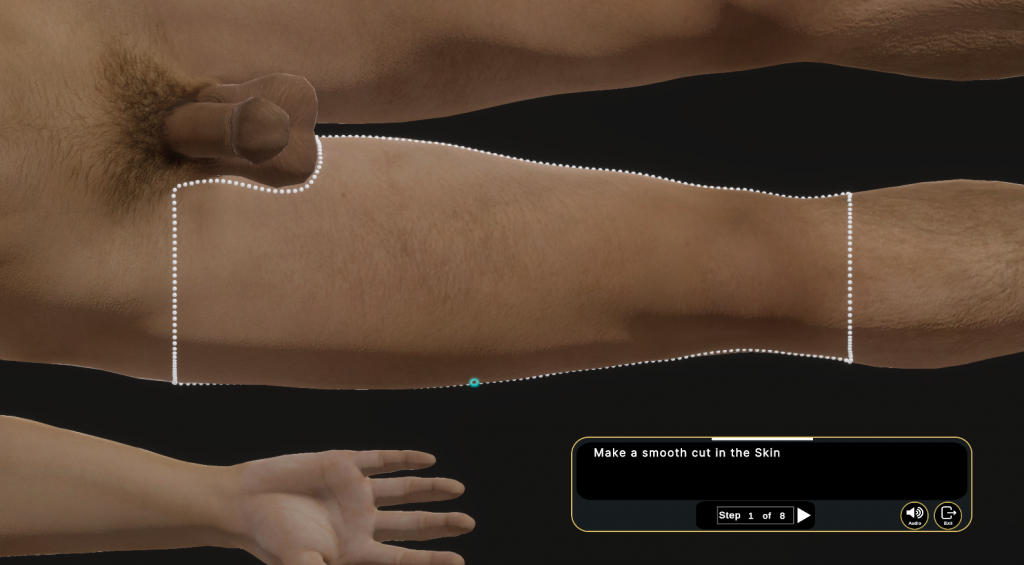
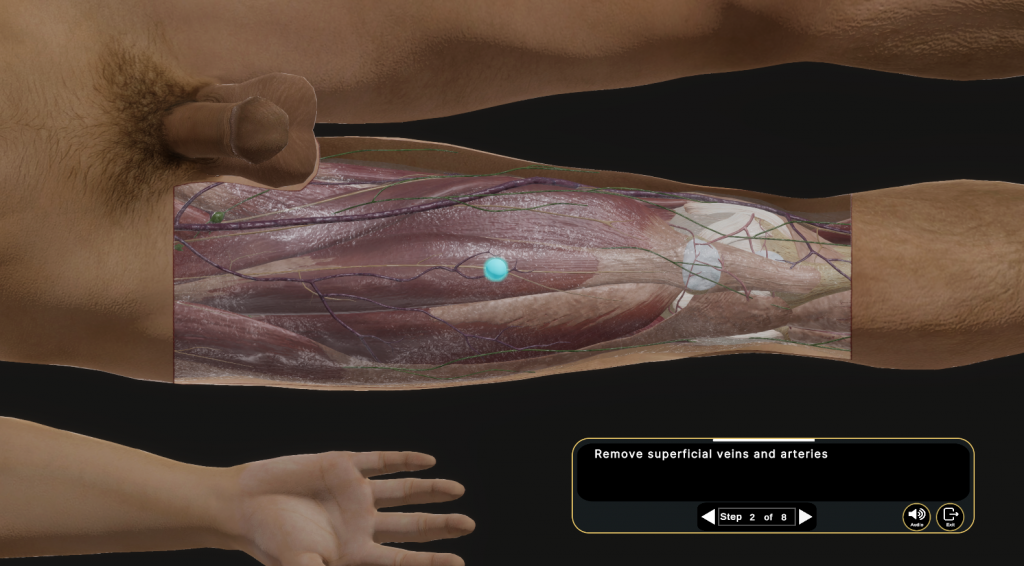
Annotations:
The human body parts, layers and organs are annotated which guides students and can help them learn the theoretical concepts in a better way.
Guided instructions:
All the steps in window dissection are supplemented with interactive voice-over features, which guide students and interact with them by asking students to identify structures in a particular layer under study.
Interactive visuals:
The students can visualize the relations of different structures in 3D to relate their anatomical and clinical significance, which helps them retain information accurately. This interactive approach closely simulates the actual dissection process. Students can examine different annotated layers of the body, rotate structures, zoom in on specific details, and even perform virtual dissections.
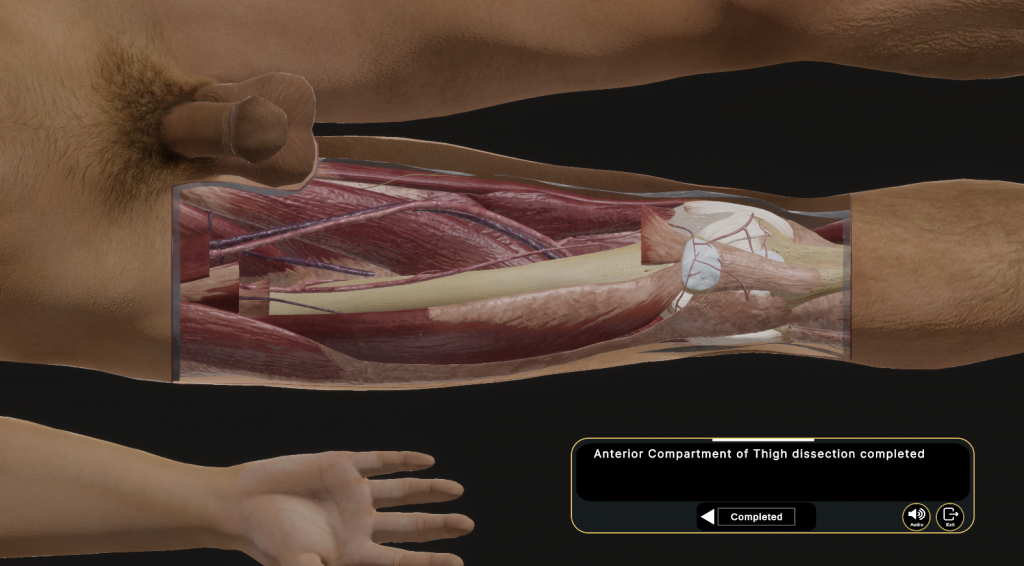
Benefits of Cadaviz for studying window dissection
- Interactive learning using 3D modules: Cadaviz is a life-size virtual human dissection table. It is one of the most advanced tables in the world and enables users to learn dissection in a detailed manner.
- Safety: Students can perform dissection without fear of exposure to formalin and chemicals due to allergies or other physiological conditions.
- Repeatability: Students can learn by repeating or undoing the changes while dissecting. This enhances students’ understanding of intricate details in anatomy.
- Accessibility: Cadaviz can be accessible to students without the need for a specific laboratory or museum assistant or resource presence while studying.
- Increased learning ability: Digital tools are known to improve student engagement and learning ability, especially in medical education. Also, the content built in Cadaviz is in adherence with the CBME curriculum, therefore, interactive studying with Cadaviz alongwith system specific quizzes, can help students score better in examinations as well.
A study conducted by Choe et al (2022) showed that students engaged in virtual anatomy learning were content with the outcomes of learning and thereby could supplement the traditional cadaveric dissection, which is evident in this questionnaire-based survey study. - Inclusive learning: Students can engage in groups and study for longer duration at their own pace and visualize each part of the body once the instructor has completed with the practical and theoretical part. Exposure to self-learning via Cadaviz may increase students’ in depth knowledge in the field of anatomy.
The benefits of Cadaviz are not just limited to students, but its utility is validated by experts in medical education as it aids students in learning anatomy at their own pace, revisiting complex concepts as needed, and practising procedures without any risk to physical specimens and undertaking quiz for each section and prepare for exams as well.
Cadaviz is the perfect tool for supplementing traditional learning. Medical educators have seen a paradigm shift in the adoption of technology-assisted pedagogy methods due to students’ noticeable change in learning ability. Even managing and maintaining Cadaviz is a more efficient, cost-effective supplementation to traditional cadaver-based learning, as it doesn’t require the same level of maintenance resources.
With technological advancement, the simulations included in Cadaviz will be supplemented with improved haptic features, which can have applications for all levels of learners, including surgical training as well.
In summary, Cadaviz revolutionizes learning complex window dissection in anatomy education through its interactive, accessible, and engaging content-supplemented visuals. It is a modern-day tool backed by seasoned educators, students and college administration with multifold utilities and benefits.
Writer – Dr. Pallavi Yadav
Senior Medical Content Writer

